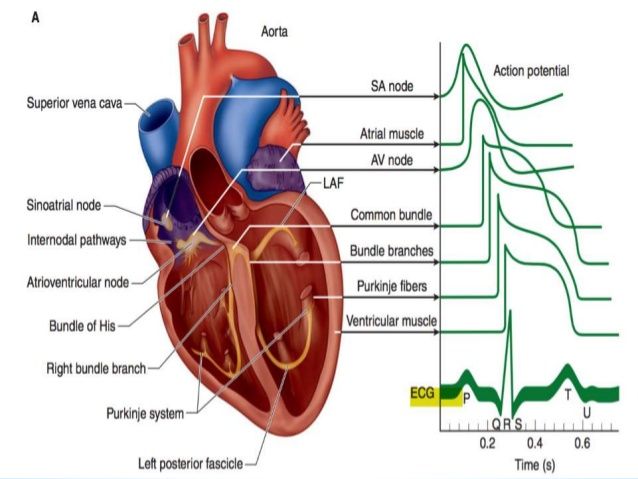Irregular electrical heart rhythm. Heart Arrhythmia: Symptoms, Causes, and Treatment of Irregular Heartbeats
What are the common symptoms of heart arrhythmia. How is an irregular heartbeat diagnosed. What causes abnormal heart rhythms. When should you seek emergency care for arrhythmia symptoms. What are the different types of heart rhythm disorders. How are cardiac arrhythmias treated.
Understanding Heart Arrhythmias: What You Need to Know
A heart arrhythmia refers to an irregular heartbeat or abnormal heart rhythm. It occurs when the electrical signals controlling the heart’s pumping action malfunction, causing the heart to beat too fast, too slow, or erratically. While some arrhythmias are harmless, others can be life-threatening and require prompt medical attention.
Are all arrhythmias dangerous? Not necessarily. Some irregular heartbeats are benign and merely bothersome. However, certain types can seriously impact heart function and pose significant health risks. Understanding the symptoms, causes, and treatment options is crucial for managing this condition effectively.
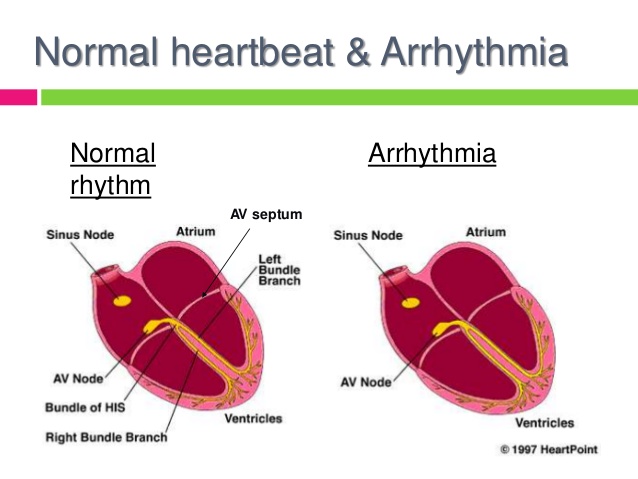
Recognizing the Symptoms: When Should You Be Concerned?
Arrhythmias can manifest in various ways, ranging from subtle sensations to alarming symptoms. Common signs include:
- Palpitations – feeling like your heart is skipping beats, fluttering, or pounding
- Dizziness or lightheadedness
- Shortness of breath
- Chest discomfort or pain
- Fatigue or weakness
- Fainting (syncope) or near-fainting episodes
Is it possible to have an arrhythmia without noticeable symptoms? Yes, some people may have “silent” arrhythmias that are only detected during routine medical examinations or when complications arise.
Red Flags: When to Seek Immediate Medical Attention
Certain symptoms warrant urgent medical evaluation:
- Sudden collapse or loss of consciousness
- Persistent, rapid heart palpitations accompanied by dizziness
- Chest pain or pressure
- Severe shortness of breath
Do you have a family history of heart problems or sudden death? This factor increases your risk and should prompt discussion with a healthcare provider, even if you’re not currently experiencing symptoms.
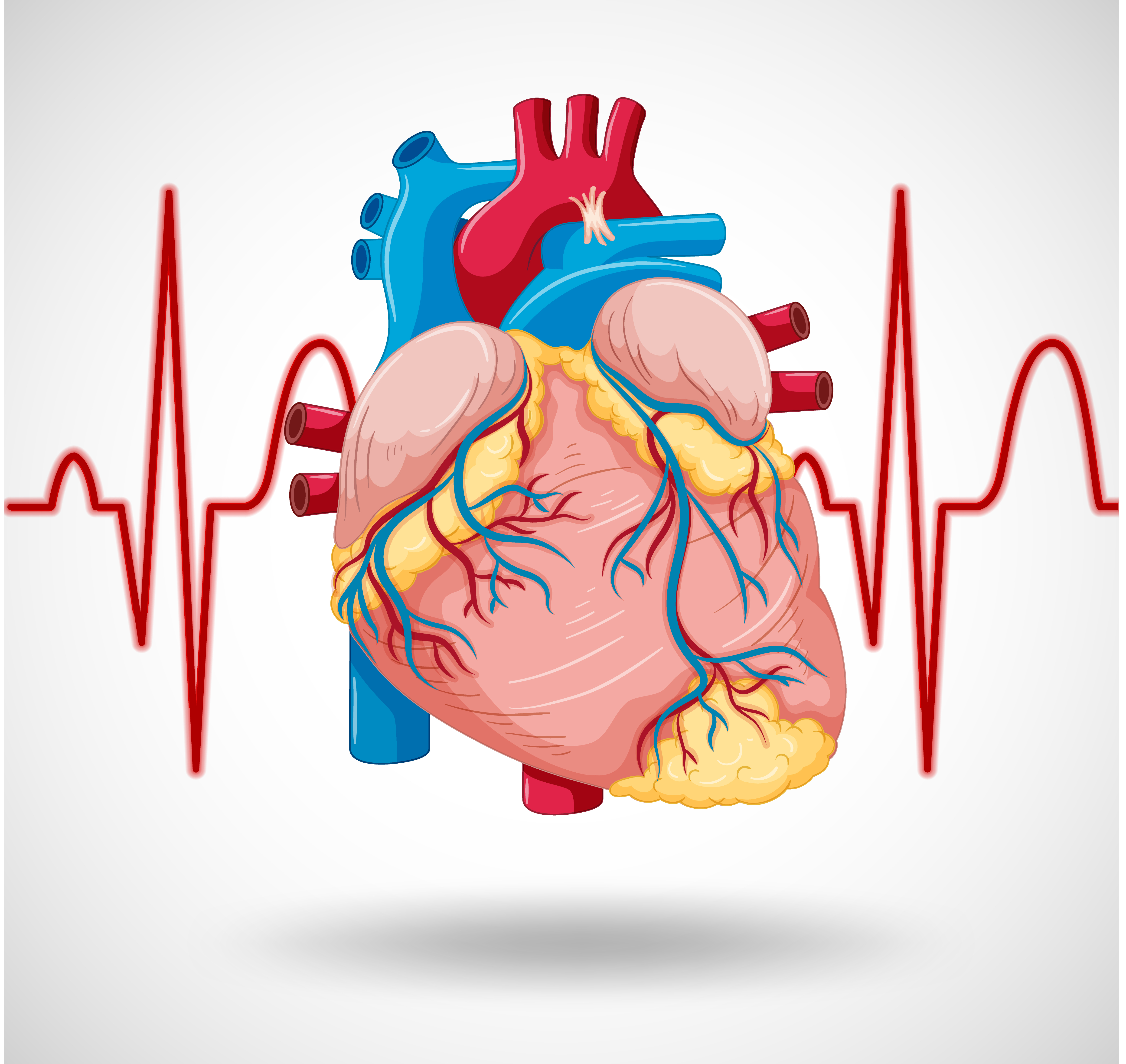
Unraveling the Causes: What Triggers Irregular Heartbeats?
Arrhythmias can stem from various factors, including:
- Heart disease or structural abnormalities
- Electrolyte imbalances
- Scarring from previous heart attacks or surgeries
- Certain medications
- Thyroid disorders
- Excessive alcohol or caffeine consumption
- Stress or strong emotions
- Illegal drug use
Can underlying health conditions contribute to arrhythmias? Absolutely. Conditions like high blood pressure, diabetes, and sleep apnea can increase the risk of developing irregular heartbeats.
Risk Factors: Are You More Susceptible?
Several factors can predispose individuals to arrhythmias:
- Age – the risk increases as you get older
- Genetics – family history of heart rhythm disorders
- Lifestyle choices – smoking, excessive alcohol consumption, lack of exercise
- Existing heart conditions – coronary artery disease, heart valve problems
- Chronic health issues – diabetes, obesity, thyroid disorders
Types of Arrhythmias: Understanding the Different Rhythm Disorders
Arrhythmias are classified based on their origin and effect on heart rate. Common types include:
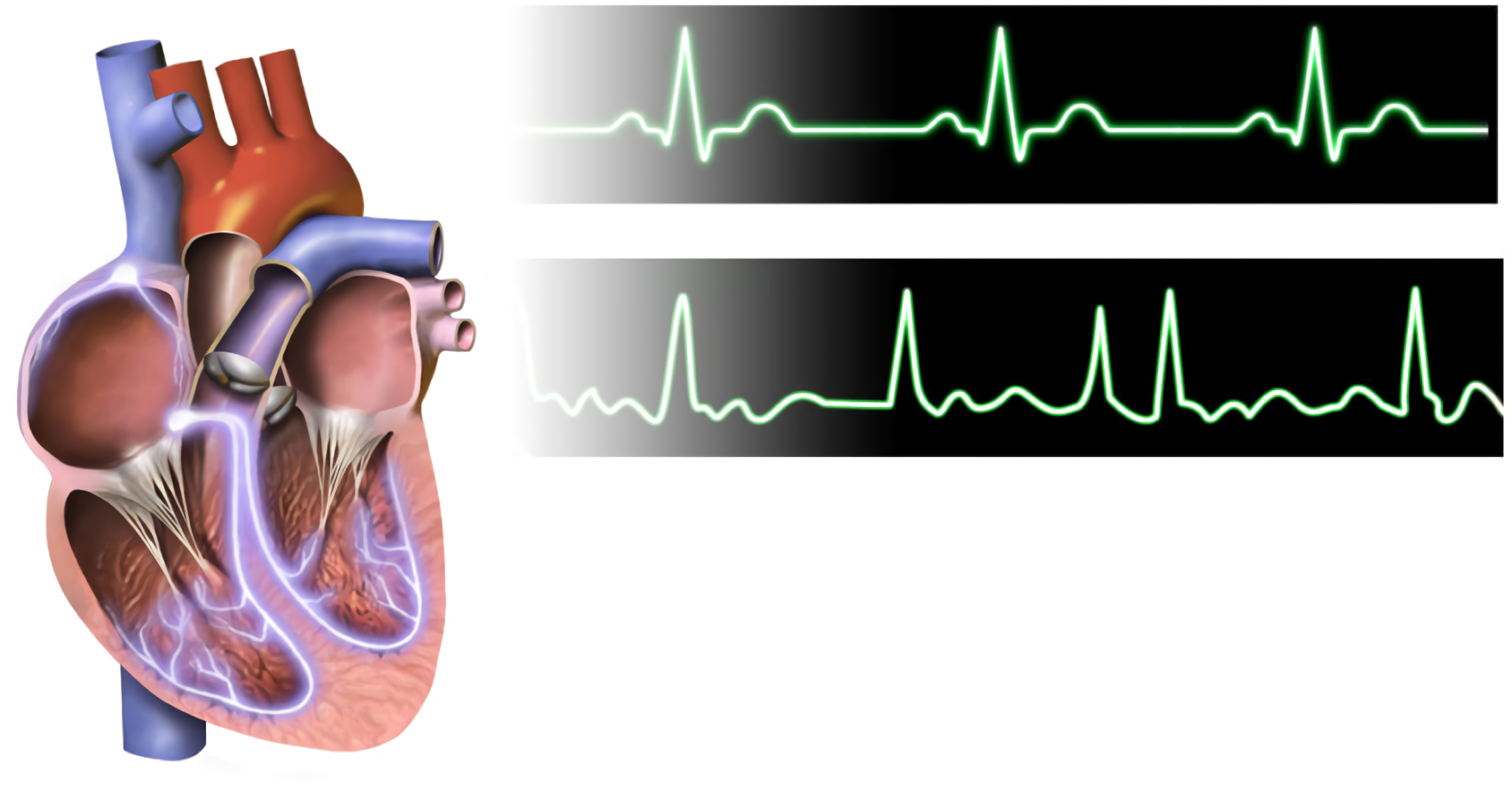
Tachycardias: When the Heart Races
Tachycardias involve a rapid heartbeat, typically over 100 beats per minute. Examples include:
- Atrial fibrillation (AFib) – irregular and often rapid heart rate
- Supraventricular tachycardia (SVT) – rapid heartbeat originating above the ventricles
- Ventricular tachycardia – rapid heartbeat originating in the ventricles
Bradycardias: When the Heart Slows Down
Bradycardias involve an abnormally slow heart rate, usually below 60 beats per minute. Types include:
- Sinus bradycardia – slow heart rate originating from the sinus node
- Heart block – disruption in electrical signal transmission between heart chambers
Can arrhythmias switch between fast and slow heart rates? Yes, some individuals may experience both tachycardias and bradycardias, a condition known as tachycardia-bradycardia syndrome.
Diagnosing Arrhythmias: How Do Doctors Detect Irregular Heartbeats?
Accurate diagnosis is crucial for effective treatment. Diagnostic methods include:
- Electrocardiogram (ECG or EKG) – records the heart’s electrical activity
- Holter monitor – portable ECG device worn for 24-48 hours
- Event recorder – similar to a Holter monitor but used for longer periods
- Echocardiogram – ultrasound imaging of the heart’s structure and function
- Stress test – monitors heart activity during exercise
- Electrophysiology study – invasive test to evaluate the heart’s electrical system
How long does it take to diagnose an arrhythmia? The duration varies depending on the frequency and nature of symptoms. Some arrhythmias are detected immediately, while others may require extended monitoring.
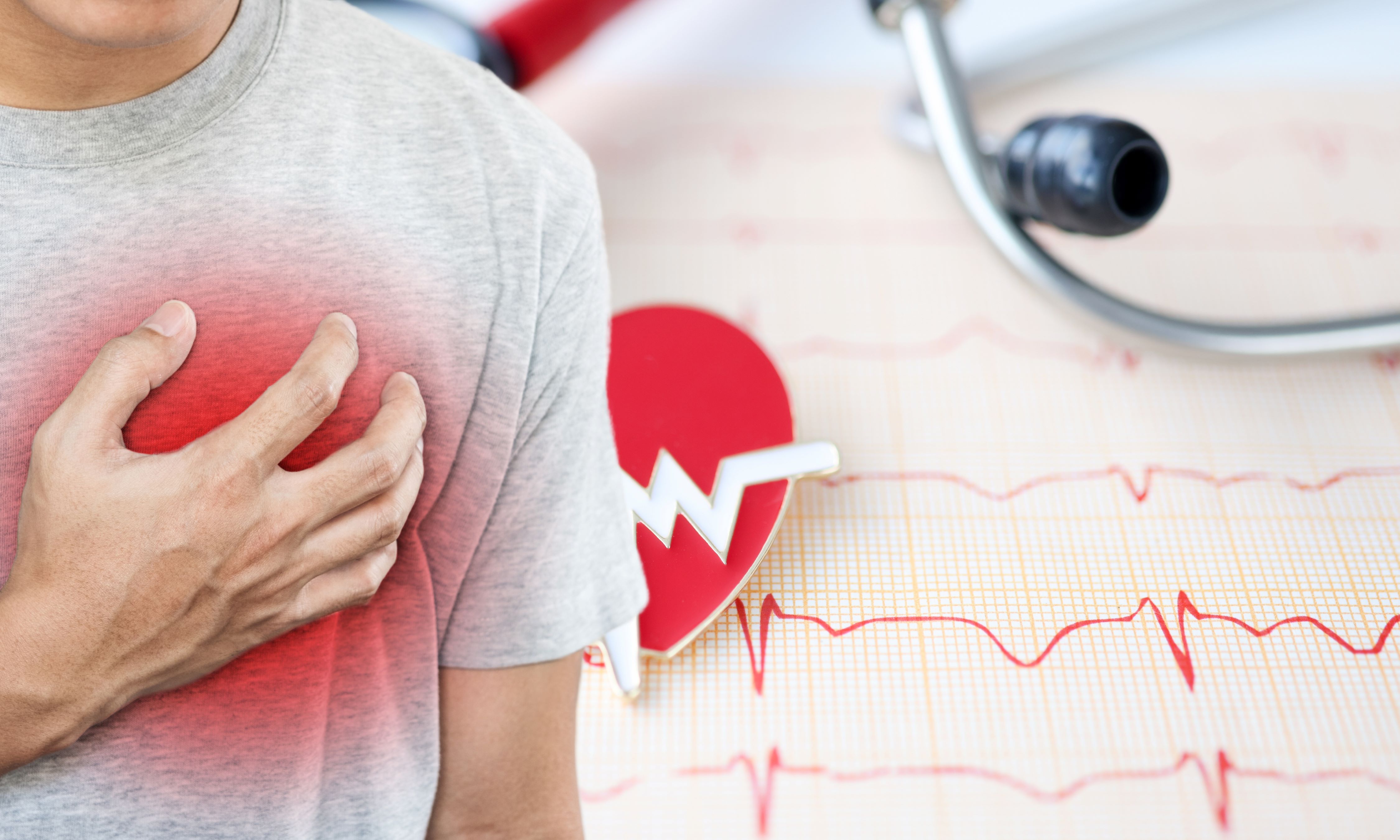
Treatment Approaches: Managing Irregular Heartbeats
Treatment strategies for arrhythmias depend on the type, severity, and underlying causes. Options include:
Medications: Controlling the Rhythm
- Antiarrhythmic drugs – help restore normal heart rhythm
- Beta-blockers – slow heart rate and reduce workload
- Anticoagulants – prevent blood clots in conditions like atrial fibrillation
Non-Invasive Procedures: Resetting the Heart’s Rhythm
- Cardioversion – uses electric shocks to restore normal rhythm
- Vagal maneuvers – techniques to slow heart rate in certain arrhythmias
Invasive Procedures: When More Intervention Is Needed
- Catheter ablation – destroys small areas of heart tissue causing arrhythmias
- Pacemaker implantation – regulates slow heart rhythms
- Implantable cardioverter-defibrillator (ICD) – monitors and corrects dangerous arrhythmias
Is lifestyle modification important in managing arrhythmias? Absolutely. Adopting heart-healthy habits like regular exercise, stress management, and avoiding triggers (e.g., excessive caffeine or alcohol) can significantly improve outcomes.
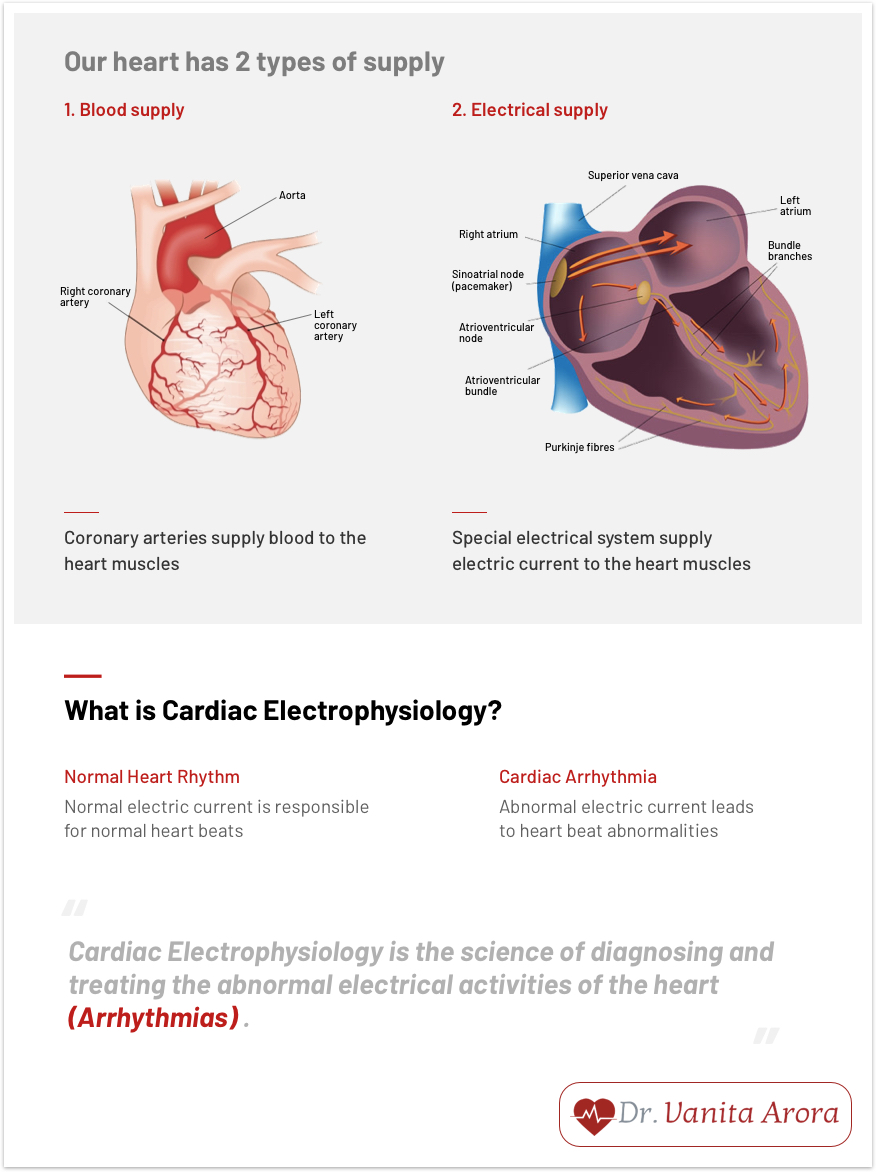
Living with Arrhythmias: Adapting to a New Normal
While arrhythmias can be concerning, many people lead full, active lives with proper management. Key aspects of living with an arrhythmia include:
- Adhering to treatment plans and medication schedules
- Regular follow-ups with healthcare providers
- Monitoring symptoms and keeping a log if necessary
- Learning to perform vagal maneuvers (if recommended by your doctor)
- Educating family members about your condition and emergency procedures
Should you limit physical activities if you have an arrhythmia? It depends on the type and severity of your condition. Many people with well-controlled arrhythmias can engage in regular exercise, but it’s crucial to consult your healthcare provider for personalized advice.
Emotional Well-being: Coping with the Psychological Impact
Living with a heart rhythm disorder can be emotionally challenging. Strategies to maintain mental health include:
- Joining support groups or connecting with others who have similar conditions
- Practicing relaxation techniques like meditation or deep breathing exercises
- Seeking professional counseling if anxiety or depression becomes overwhelming
- Staying informed about your condition to feel more in control
Preventing Arrhythmias: Strategies for a Healthy Heart Rhythm
While not all arrhythmias are preventable, you can reduce your risk by:

- Maintaining a heart-healthy diet rich in fruits, vegetables, and lean proteins
- Engaging in regular physical activity as recommended by your doctor
- Managing stress through relaxation techniques and lifestyle adjustments
- Avoiding excessive alcohol and caffeine consumption
- Quitting smoking and avoiding secondhand smoke
- Keeping other health conditions (e.g., high blood pressure, diabetes) under control
- Getting regular check-ups and screenings, especially if you have risk factors
Can supplements help prevent arrhythmias? Some studies suggest that certain supplements, like omega-3 fatty acids, may have heart-protective effects. However, always consult your healthcare provider before starting any supplement regimen, as some can interact with medications or exacerbate certain conditions.
The Role of Sleep in Heart Health
Adequate sleep is crucial for maintaining a healthy heart rhythm. Poor sleep quality or sleep disorders like sleep apnea can increase the risk of arrhythmias. Tips for better sleep include:
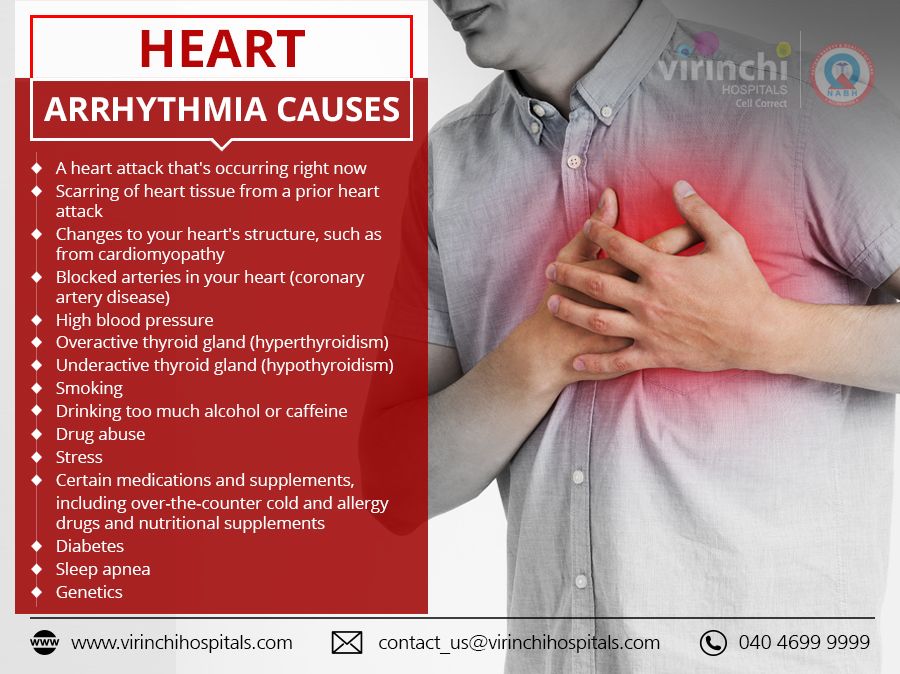
- Maintaining a consistent sleep schedule
- Creating a relaxing bedtime routine
- Ensuring your sleeping environment is dark, quiet, and cool
- Avoiding screens for at least an hour before bed
- Limiting caffeine and alcohol intake, especially in the evening
Advances in Arrhythmia Research: What Does the Future Hold?
The field of cardiac electrophysiology is rapidly evolving, with promising developments on the horizon:
Innovative Diagnostic Tools
- Wearable devices with advanced heart monitoring capabilities
- Artificial intelligence algorithms for more accurate arrhythmia detection
- Genetic testing to identify inherited arrhythmia syndromes
Novel Treatment Approaches
- Gene therapy for certain inherited arrhythmias
- Improved catheter ablation techniques with higher success rates
- Leadless pacemakers and subcutaneous ICDs for reduced complications
How might these advancements impact patient care? These innovations could lead to earlier detection, more personalized treatment strategies, and improved quality of life for individuals with arrhythmias.

Special Considerations: Arrhythmias in Specific Populations
Certain groups may require specialized care and monitoring for heart rhythm disorders:
Pediatric Arrhythmias
Children can experience arrhythmias, sometimes due to congenital heart defects. Management often involves a multidisciplinary approach with pediatric cardiologists and electrophysiologists.
Arrhythmias in Pregnancy
Pregnancy can exacerbate existing arrhythmias or trigger new ones due to hormonal and hemodynamic changes. Close monitoring and careful medication management are essential.
Elderly Patients
Older adults are more susceptible to arrhythmias due to age-related changes in the heart and coexisting health conditions. Treatment strategies may need to be adjusted to account for other medications and overall health status.
Does managing arrhythmias differ in these populations? Yes, treatment approaches often need to be tailored to address the unique physiological and lifestyle factors of each group.
The Importance of Patient Education and Empowerment
Effective management of arrhythmias relies heavily on patient involvement and understanding. Key aspects include:
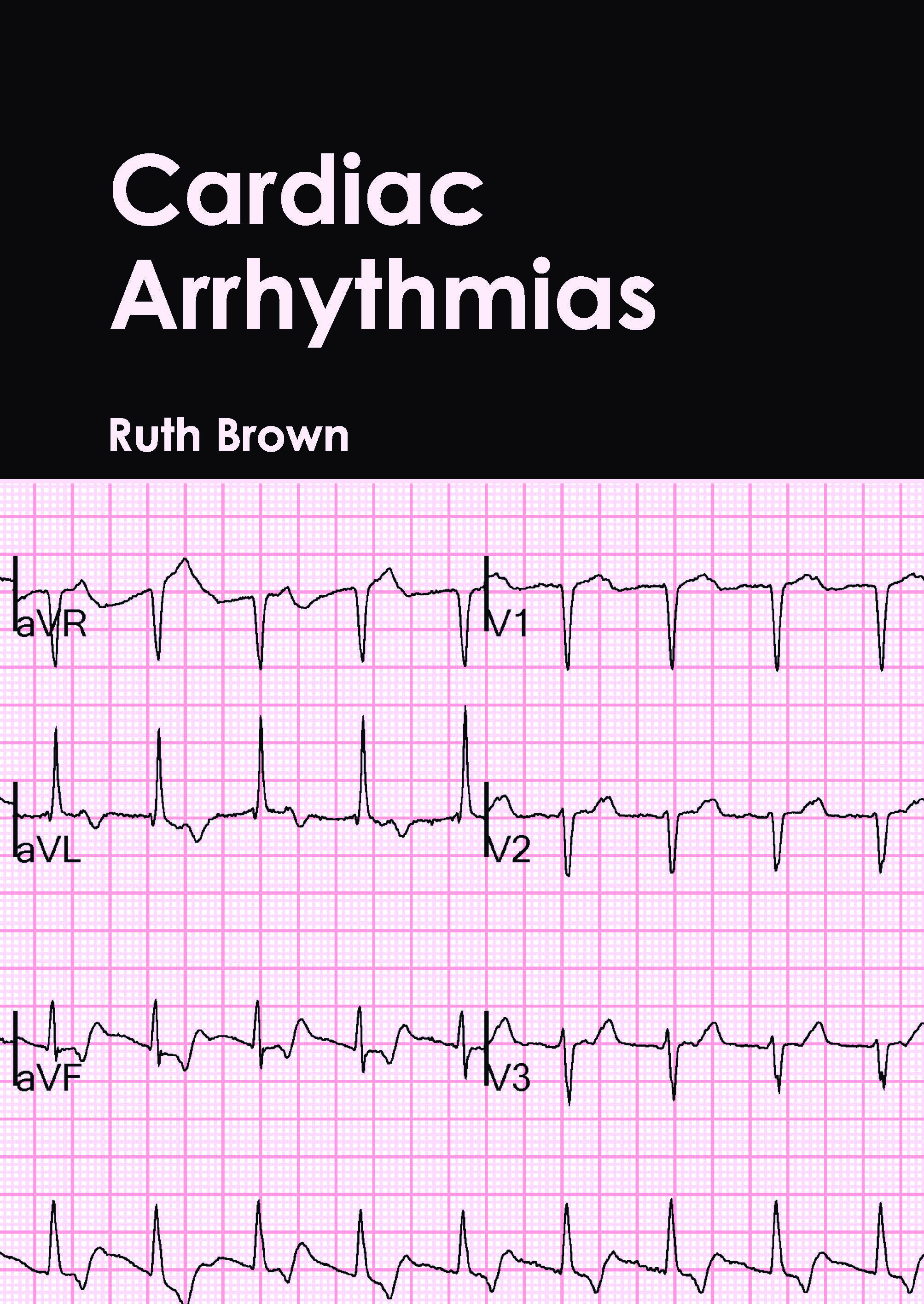
- Learning to recognize symptoms and when to seek medical attention
- Understanding the importance of medication adherence and follow-up appointments
- Being aware of potential triggers and how to avoid them
- Knowing how to use any prescribed devices (e.g., home monitoring equipment)
- Feeling confident in discussing concerns and treatment options with healthcare providers
How can patients become more engaged in their care? Actively participating in shared decision-making with healthcare providers, staying informed about their condition, and joining patient advocacy groups can empower individuals to take control of their heart health.
The Role of Telemedicine in Arrhythmia Management
Telemedicine has emerged as a valuable tool in managing arrhythmias, offering benefits such as:
- Remote monitoring of implantable devices
- Virtual consultations for routine follow-ups
- Timely adjustments to treatment plans
- Improved access to specialists for patients in rural areas
Can telemedicine completely replace in-person visits? While telemedicine offers many advantages, certain aspects of arrhythmia care, such as device implantation or complex procedures, still require in-person visits. A balanced approach combining virtual and in-person care often provides the best outcomes.

Mayo Clinic Minute: Watch for these heart arrhythmia red flags
By
Jason Howland
A heart arrhythmia is an irregular heartbeat. It occurs when the electrical signals that tell the heart when to beat and pump blood aren’t functioning properly. Some heart arrhythmias can be harmless and just bothersome, while others can be life-threatening.
In this Mayo Clinic Minute, learn more about the red flags to watch out for.
Watch: The Mayo Clinic Minute
Journalists: Broadcast-quality video (1:10) is in the downloads at the end of this post. Please courtesy: “Mayo Clinic News Network.” Read the script.
Please courtesy: “Mayo Clinic News Network.” Read the script.
Some symptoms that you might expect for heart arrhythmia are often red flags for seeking treatment or screening.
“If a symptom is serious — so a sudden collapse or loss of consciousness — that’s immediate attendance to an emergency department. Likewise, if one’s having palpitations — so the heart racing away unexpectedly — and associated dizziness, lightheadedness, another reason to go to the emergency department straightaway,” says Dr. Elijah Behr, a cardiology consultant at Mayo Clinic Healthcare in London.
Chest pain also can be an obvious sign and may require emergency care. Some heart palpitation symptoms may be less frequent and severe, but still should be assessed by a health care clinician.
“The other thing that’s a red flag, in particular in young patients, is if there’s a family history of concern,” says Dr. Behr. “Accepting that that person may not have any history of heart problems themselves already, if they know that there is a family history of somebody at a young age having had a premature or sudden death, or if there’s a family history of inherited heart problems, then that may flag up that there is a potential risk if somebody is having symptoms or may actually just need screening from the point of view of preventing risk before they develop symptoms. “
“
For the safety of its patients, staff and visitors, Mayo Clinic has strict masking policies in place. Anyone shown without a mask was recorded prior to COVID-19 or recorded in an area not designated for patient care, where social distancing and other safety protocols were followed.
Related articles
Mayo Clinic Minute: How vasculitis affects the body
The Vasculitis Clinic at Mayo Clinic is a place where experts in a number of fields of medicine help adults and children diagnose and treat …
By Jason Howland • June 21, 2023
Mayo Clinic Minute: Does menopause cause brain fog?
Menopause can bring on an array of symptoms from hot flashes and night sweats to weight gain. But can it cause problems with memory?
Mayo Clinic’s Dr. …
By Marty Velasco Hames • June 7, 2023
Symptoms, Types, Causes, Diagnosis, and Treatment
Written by WebMD Editorial Contributors
- What Is an Arrhythmia?
- What Are the Symptoms of Arrhythmia?
- What Causes Arrhythmia?
- What Are Some Arrhythmia Risk Factors?
- What Are the Types of Arrhythmias?
- How Are Arrhythmias Diagnosed?
- How Are Arrhythmias Treated?
- Complications of Arrhythmias
- Safe Driving Concerns
- Arrhythmia Prevention
- More
An arrhythmia is an irregular heartbeat. It means your heart is out of its usual rhythm.
It means your heart is out of its usual rhythm.
It may feel like your heart skipped a beat, added a beat, or is “fluttering.” It might feel like it’s beating too fast (which doctors call tachycardia) or too slow (called bradycardia). Or you might not notice anything.
Arrhythmias can be an emergency, or they could be harmless. If you feel something unusual happening with your heartbeat, get medical help right away so doctors can find out why it’s happening and what you need to do about it.
An arrhythmia can be silent, meaning you don’t notice any symptoms. Your doctor may spot an uneven heartbeat during a physical exam.
If you have symptoms, they may include:
- Palpitations (a feeling of skipped heartbeats, fluttering, or “flip-flops”)
- Pounding in your chest
- Dizziness or feeling lightheaded
- Fainting
- Shortness of breath
- Chest pain or tightness
- Weakness or fatigue (feeling very tired)
- Anxiety
- Blurry vision
- Sweating
You could have an arrhythmia even if your heart is healthy. Or it could happen because of:
Or it could happen because of:
- Heart disease
- The wrong balance of electrolytes (such as sodium or potassium) in your blood
- Heart injury or changes such as reduced blood flow or stiff heart tissue
- Healing process after heart surgery
- Infection or fever
- Certain medications
- Problems with the electrical signals in your heart
- Strong emotions, stress, or surprise
- Things in your daily life like alcohol, tobacco, caffeine, or exercise
Things that may make you more likely to have an arrhythmia include your:
- Age. The chances go up as you get older.
- Genes. Your odds might be higher if a close relative has had an arrhythmia. Some types of heart disease can also run in families.
- Lifestyle. Alcohol, tobacco, and recreational drugs can raise your risk.
- Medical conditions.High blood pressure, diabetes, low blood sugar, obesity, sleep apnea, and autoimmune disorders are among the conditions that may cause heart rhythm problems.

- Environment. Things in the world around you, like air pollution, can make an arrhythmia more likely.
Arrhythmias are divided up by where they happen. If they start in the ventricles, or lower chambers of your heart, they’re called ventricular. When they begin in the atria, or upper chambers, they’re called supraventricular.
Doctors also group them by how they affect your resting heart rate. Bradycardia is a heart rate of fewer than 60 beats per minute. Tachycardia is more than 100 beats per minute.
Supraventricular arrhythmias include:
- Premature atrial contractions. These are early extra beats. They’re harmless and generally don’t need treatment.
- Atrial fibrillation (AFib). The upper chambers of your heart contract in an unusual way. Your heart might beat more than 400 times a minute.
- Atrial flutter. This is usually more organized and regular than atrial fibrillation.
 It happens most often in people who have heart disease and in the first week after heart surgery. It often changes to atrial fibrillation.
It happens most often in people who have heart disease and in the first week after heart surgery. It often changes to atrial fibrillation. - Paroxysmal supraventricular tachycardia (PSVT). This is a rapid heart rate, usually with a regular rhythm. It begins and ends suddenly.
- Accessory pathway tachycardias. You can have a rapid heart rate because of an extra pathway between your heart’s upper and lower chambers. Think of it as an extra road on your way home as well as your usual route. When that happens in your heart, it can cause a fast rhythm.
- AV nodal reentrant tachycardia (AVNRT). This is caused by an extra pathway through a part of your heart called the AV node. It can cause heart palpitations, fainting, or heart failure.
Ventricular arrhythmias include:
- Premature ventricular contractions (PVCs). These are among the most common arrhythmias.
 They’re the “skipped heartbeat” that many of us feel sometimes.
They’re the “skipped heartbeat” that many of us feel sometimes. - Ventricular tachycardia (V-tach). This is a rapid heart rhythm starting from your heart’s lower chambers. Because your heart is beating too fast, it can’t fill with enough blood. This can be a serious arrhythmia, especially in people who have heart disease, and it may be linked to other symptoms.
- Ventricular fibrillation (V-fib). This happens when your heart’s lower chambers quiver and can’t contract or pump blood to the rest of your body. It’s a medical emergency that must be treated with CPR and defibrillation as soon as possible.
- Long QT syndrome. Your heart’s lower chambers take too long to contract and release. This may cause dangerous rhythm problems and death.
Another type of arrhythmia, bradyarrhythmia, is a slow rhythm because of disease in your heart’s electrical system or because of medication. It may make you pass out or feel like you will. Types of bradyarrhythmia include:
Types of bradyarrhythmia include:
- Sinus node dysfunction. This is caused by a problem with your heart’s sinus node, its natural pacemaker.
- Heart block. There’s a delay or a block of the electrical impulse as it travels from your heart’s sinus node to its lower chambers.
To diagnose an arrhythmia or find its cause, doctors use tests including:
- EKG. An electrocardiogram records the electrical activity of your heart. You wear small electrode patches on your chest, arms, and legs for the quick, painless test, which you take in your doctor’s office.
- Holter monitor. This is a portable EKG (also called an “ambulatory electrocardiogram” or an ECG) about the size of a postcard or digital camera that you’ll use for 1 to 2 days, or up to 2 weeks. The test measures the movement of electrical signals or waves through your heart. These signals tell your heart to contract (squeeze) and pump blood.
 You’ll have electrodes taped to your skin. It’s painless, although some people have mild skin irritation from the tape used to attach the electrodes to the chest. You can do everything but shower or bathe while wearing the electrodes. After the test period, you’ll go back to see your doctor. They’ll download the information.
You’ll have electrodes taped to your skin. It’s painless, although some people have mild skin irritation from the tape used to attach the electrodes to the chest. You can do everything but shower or bathe while wearing the electrodes. After the test period, you’ll go back to see your doctor. They’ll download the information. - Event monitor. If your symptoms don’t happen often, your doctor may suggest that you wear one of these, usually for about a month. When you push a button, it records and stores your heart’s electrical activity for a few minutes. Try to get a reading when you notice symptoms. Your doctor will interpret the results.
- Implantable loop recorder. Your doctor puts this under your skin, where it constantly records your heart’s electrical activity. It can send information to your doctor’s office.
- Stress test. There are different kinds of stress tests. The goal is to check how much stress your heart can manage before having a rhythm problem or not getting enough blood.
 For the most common type of stress test, you’ll walk on a treadmill or pedal a stationary bike while you get an EKG and have your heart rate and blood pressure monitored. Technicians slowly raise the intensity level of your exercise.
For the most common type of stress test, you’ll walk on a treadmill or pedal a stationary bike while you get an EKG and have your heart rate and blood pressure monitored. Technicians slowly raise the intensity level of your exercise. - Echocardiogram. This test uses ultrasound to check your heart muscle and valves.
- Cardiac catheterization. Your doctor will insert a long, thin tube, called a catheter, into a blood vessel in your arm or leg. They’ll guide it to your heart with help from a special X-ray machine. Then, they’ll inject dye through the catheter to help make X-ray videos of your heart valves, coronary arteries, and chambers.
- Electrophysiology study. This test records your heart’s electrical activities and pathways. It can help find out what’s causing heart rhythm problems and find the best treatment for you. During the test, your doctor will safely trigger your unusual heart rhythm. Then, they may give you medications to see which one controls it best or to see what procedure or device you need to treat it.

- Head-up tilt table test. Doctors use this test to find out what’s causing fainting spells. It measures the difference in heart rate and blood pressure when you’re standing up and lying down. You’ll get this test in a lab. You’ll lie on a stretcher, tilted at different angles while you get an EKG and specialists check your blood pressure and oxygen level. This shows if symptoms of passing out are due to your electrical system, nervous system, or vascular system.
Treatment will depend on what type of arrhythmia you have. Your doctor may recommend one or more of these.
Medications
Medicines that treat uneven heart rhythms include:
- Adenosine (Adenocard)
- Atropine (Atropen)
- Beta-blockers
- Calcium channel blockers
- Digoxin (Digitek, Digox, Lanoxin)
- Potassium channel blockers
- Sodium channel blockers
Vagal maneuvers
These techniques trigger your body to relax by affecting your vagus nerve, which helps control your heart rate. Your doctor might tell you to:
Your doctor might tell you to:
- Cough or gag
- Hold your breath and bear down (Valsalva maneuver)
- Lie down
- Put a cold, wet towel over your face
Electrical cardioversion
If drugs can’t control an uneven heart rhythm (such as atrial fibrillation), you might need cardioversion. For this, doctors put you under and then send an electrical shock to your chest wall to trigger your heart’s regular rhythm.
Pacemaker
This device sends small electrical impulses to your heart muscle to keep a safe heart rate. It includes a pulse generator, which houses the battery and a tiny computer, and wires that send impulses to the heart muscle.
Implantable cardioverter defibrillator (ICD)
Doctors mainly use ICDs to treat ventricular tachycardia and ventricular fibrillation, two life-threatening heart rhythms.
The ICD constantly tracks your heart rhythm. When it detects a very fast, unusual rhythm, it delivers an electric shock to the heart muscle to make it beat in a regular rhythm again. The ICD has two parts: the leads and a pulse generator. The leads are made up of wires and sensors that monitor the heart rhythm and deliver energy used for pacing or defibrillation. The generator houses the battery and a tiny computer. Energy is stored in the battery until it is needed. The computer receives information from the leads to determine how the heart is beating.
The ICD has two parts: the leads and a pulse generator. The leads are made up of wires and sensors that monitor the heart rhythm and deliver energy used for pacing or defibrillation. The generator houses the battery and a tiny computer. Energy is stored in the battery until it is needed. The computer receives information from the leads to determine how the heart is beating.
Your doctor programs the ICD to include one or all of the following functions:
- Anti-tachycardia pacing (ATP). A series of small electrical impulses to the heart muscle restores a regular rate and rhythm.
- Cardioversion. You may get a low-energy shock at the same time your heart beats to restore regular rhythm.
- Defibrillation. When your heartbeat is dangerously fast or uneven, your heart muscle gets a higher-energy shock to restore a regular rhythm.
- Anti-bradycardia pacing. Many ICDs give backup pacing to keep the heart rhythm if it slows too much.

There are different types of ICDs, including:
- Single-chamber ICD. A lead is attached in the right ventricle. If needed, energy is delivered to the ventricle to restore a normal heart rhythm.
- Dual-chamber ICD. Leads are attached in the right atrium and the right ventricle. Energy can be delivered to the right atrium and then to the right ventricle, helping your heart to be paced in a normal sequence.
- Biventricular ICD. Leads are attached in the right atrium, the right ventricle, and the coronary sinus adjacent to the left ventricle. This technique helps the heart beat in a more efficient way and is specifically used for patients with heart failure.
Your doctor will determine which type of ICD is best for you. Before you have your ICD implanted, ask your doctor what medications you can take. Your doctor may ask you to stop taking certain medications before the procedure. You will receive specific instructions.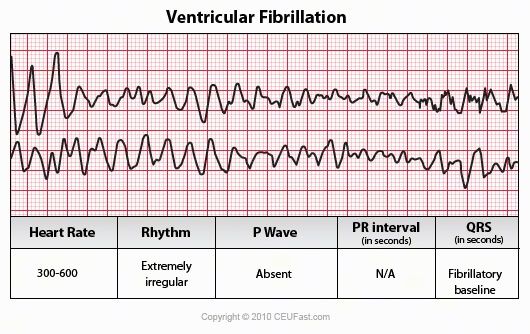
After it’s implanted, you might not notice a low-energy shock. Or it may feel like a flutter in your chest. The high-energy shock lasts just a second, but it can hurt. Some people say it feels like being hit with a baseball bat or being kicked by a horse. Most people feel it more in their back than their chest. If you feel a shock, sit or lie down because you may pass out.
Talk to your doctor about what to do if you ever get shocked. If you do get shocked, call your doctor immediately.
Catheter ablation
Think of this procedure as rewiring to fix an electrical problem in your heart.
Your doctor will insert a catheter through your leg. It delivers high-frequency electrical energy to a small area inside your heart that causes the unusual rhythm. This energy “disconnects” the pathway of the unusual rhythm.
Doctors use ablation to treat most PSVTs, atrial flutter, atrial fibrillation, and some atrial and ventricular tachycardias.
Heart surgery for arrhythmias
The maze procedure is a type of surgery to correct atrial fibrillation. Your surgeon makes a series, or “maze,” of cuts in your heart’s upper chambers. The goal is to keep your heart’s electrical impulses only on certain pathways. Some people need a pacemaker afterward.
Your surgeon makes a series, or “maze,” of cuts in your heart’s upper chambers. The goal is to keep your heart’s electrical impulses only on certain pathways. Some people need a pacemaker afterward.
Your doctor might recommend other procedures, such as a coronary bypass, to treat other forms of heart disease.
Without treatment, an uneven heart rhythm could cause dangerous problems such as:
- Alzheimer’s disease and dementia. These cognitive disorders may happen because your brain doesn’t get enough blood over time.
- Heart failure. Your heart might not pump as well as it should after repeated arrhythmias.
- Stroke. Blood that lingers in your atria can clot. If a clot travels to your brain, it may cause a stroke.
- Cardiac arrest. V-fib could cause your heart to stop.
If you have an arrhythmia, you could faint behind the wheel.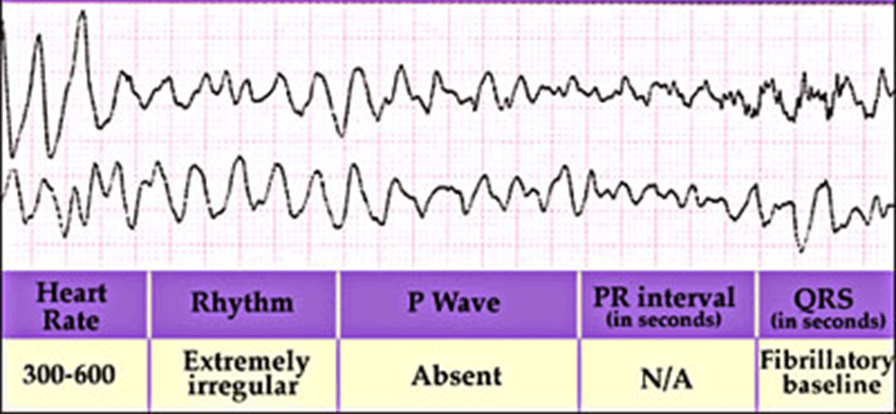 This could put you, other motorists, pedestrians, and property at great risk.
This could put you, other motorists, pedestrians, and property at great risk.
To figure out whether you can drive safely, your doctor will consider:
- What type of arrhythmia you have
- How serious yours is
- The treatment you receive for it (if any)
- How often you have symptoms and how serious they are
If you have no symptoms and you haven’t had any serious heart rhythm problems, you should be able to drive as you always have. If meds keep your arrhythmia under control, your doctor may give you the green light to drive, too.
In addition to meds to help manage your heart rhythm, you may have two other treatments. Both would keep you out of the driver’s seat for a while:
Ablation: This treatment will usually restrict you to the passenger’s seat for about a week. It may keep you there longer, depending on your medical history.
Implantable cardioverter defibrillator: Usually after you get an ICD, you’ll be asked not to drive for a week. If you got an ICD after fainting or surviving cardiac arrest, you may have to wait several months before you get back behind the wheel.
If you got an ICD after fainting or surviving cardiac arrest, you may have to wait several months before you get back behind the wheel.
You can’t drive commercially (as in a delivery truck or a taxi) at all if you have an ICD.
You can’t always prevent arrhythmias. Regular checkups with your doctor can help keep you from having more heart rhythm problems. Be sure they know all of the medications you’re taking. Some cold and cough medicines can trigger an arrhythmia, so talk to your doctor before using them.
They may also recommend some lifestyle changes:
- Eat a healthy diet. Get plenty of fruits and vegetables, fish, and plant-based proteins. Avoid saturated and trans fats.
- Keep cholesterol and blood pressure under control.
- Don’t smoke.
- Keep a healthy weight.
- Exercise regularly.
- Manage stress.
- Limit alcohol and caffeine.
Top Picks
symptoms, causes, diagnosis, types and methods of treatment in “SM-Clinic”
Arrhythmologist deals with the treatment of this disease
, Cardiologist
, Cardiovascular surgeon
- About the disease
- Species
- Symptoms
- Causes
- Diagnostics
- Expert opinion
- Treatment
- Prophylaxis
- Rehabilitation
- Questions and answers
Types of heart rhythm disorders
Classification of heart rhythm disorders is carried out depending on the part of the heart in which problems are observed. There are 3 main types of arrhythmias:
There are 3 main types of arrhythmias:
- sinus;
- atrial;
- ventricular.
Further division into types occurs according to the frequency of heart contractions:
- Tachycardia is a pathological condition in which the pulse is accelerated and exceeds 80-90 beats per minute. During physical exertion, this is considered normal, but for the body at rest, such a heart rate is abnormal.
- Bradycardia is a subtype of arrhythmia characterized by a slowing of the heart rate below 60 beats per minute.
- Extrasystole – a spontaneously occurring condition in which the normal rhythm of the heart is interrupted by intermediate premature contractions. May be atrial or ventricular.
- Atrial fibrillation or atrial fibrillation is a condition characterized by chaotic contraction of the atrial myocardium and irregular contraction of the ventricles.
- Paroxysmal supraventricular tachycardia – a spontaneous increase in the rhythm of cardiac activity up to 140-220 beats per minute.
 The duration of such attacks can vary from a few seconds to several days.
The duration of such attacks can vary from a few seconds to several days. - Paroxysmal ventricular tachycardia is a rhythm disturbance in which electrical impulses are generated in the ventricles of the heart at a high frequency (100 or more beats per minute). With a long course, it can turn into ventricular fibrillation.
- Ventricular fibrillation is a critical condition in which there is a desynchronization of the work of individual parts of the heart, due to which it cannot perform its functions. In the absence of medical care, it inevitably ends in the death of the patient.
Symptoms of cardiac arrhythmias
Some types of arrhythmias are asymptomatic, others are accompanied by non-specific symptoms that may be characteristic of various cardiac pathologies. Patients complain about:
- weakness;
- dizziness;
- feeling short of breath;
- tightness and heaviness in the chest;
- various kinds of pain in the region of the heart;
- darkening of the eyes;
- tinnitus;
- feeling of a sinking heart, interruptions in his work.

Occasionally, unreasonable fear and panic attacks may occur during cardiac arrhythmias. These symptoms are characteristic of many diseases associated with disruption of the cardiovascular system. In severe situations, a person loses consciousness for a short or long period (depending on the type and severity of the arrhythmia).
Causes of cardiac arrhythmias
Arrhythmia may be a consequence of congenital heart anomalies or acquired during life. Often, the main factor that caused a heart rhythm disorder is a structural change in the conduction system of the electrical impulses of the heart. This can be affected by pathologies of the cardiovascular system (ischemic heart disease, heart valve disease, arterial hypertension, myocarditis, Wolff-Parkinson-White syndrome), autonomic disorders, thyroid problems or water and electrolyte imbalance.
In addition to diseases, there are general factors that can affect the work of the heart and cause it to malfunction:
- stressful situations;
- body intoxication;
- consumption of large amounts of caffeine;
- abuse of strong alcoholic beverages;
- mental disorders causing long-term anxiety.

Get advice
If you experience these symptoms, we recommend that you make an appointment with your doctor. Timely consultation will prevent negative consequences for your health.
You can find out more about the disease, prices for treatment and sign up for a consultation with a specialist by phone:
+7 (495) 292-39-72
Request a call back
Book online
Why SM-Clinic?
1
Treatment is carried out in accordance with clinical recommendations
2
Comprehensive assessment of the nature of the disease and treatment prognosis
3
Modern diagnostic equipment and own laboratory
4
High level of service and balanced pricing policy
Diagnosis of cardiac arrhythmias
The initial examination of a patient with suspected arrhythmia is carried out by a general practitioner or cardiologist. Immediately after treatment, the doctor collects an anamnesis and conducts a physical examination, including:
- visual assessment of the condition of the skin in order to detect rashes, cyanosis and swelling;
- pulse measurement to evaluate heart rate and pre-confirm arrhythmia;
- auscultation of the chest; carried out using a phonendoscope;
- measurement of blood pressure to detect disorders in the work of the cardiovascular system.

The next step to confirm the diagnosis is an in-depth instrumental examination. Procedures are prescribed by a cardiologist and include:
- Electrocardiogram (ECG). In some cases, an ECG with additional stress on the body may be required.
- Daily monitoring of ECG parameters according to Holter.
- Echocardiogram (EchoCG) – ultrasound examination of the heart.
If necessary, an additional MRI and CT scan can be ordered. Laboratory diagnostics is of an auxiliary nature and is carried out as part of the search for the cause of the pathology.
Expert opinion
Regular heart rhythm disturbances signal the presence of pathological changes in the human body. Failures interfere with the normal transport of blood to vital organs, due to which a significant deterioration in the patient’s well-being can be observed. Ignoring any form of arrhythmia increases the risk of serious complications: heart failure, myocardial infarction, blood clots. In severe rhythm disturbances, there is a risk of developing ventricular fibrillation, which quickly leads to the death of the patient. The only right decision when symptoms indicating an arrhythmia are found is to seek medical help. A comprehensive examination will help doctors understand the causes of the pathology and prescribe a treatment that will keep the rhythm under control.
In severe rhythm disturbances, there is a risk of developing ventricular fibrillation, which quickly leads to the death of the patient. The only right decision when symptoms indicating an arrhythmia are found is to seek medical help. A comprehensive examination will help doctors understand the causes of the pathology and prescribe a treatment that will keep the rhythm under control.
Yuri Alekseevich Kremnev
Cardiologist, somnologist, doctor of medical sciences, doctor of the highest category, Honored Doctor of the Russian Federation.
Treatment of cardiac arrhythmias
Conservative treatment
Treatment of arrhythmia depends on its type and cause. In the absence of a threat to the patient’s life, dynamic observation and lifestyle correction are prescribed. If indicated, antiarrhythmic drugs are prescribed for continuous use. Means are selected individually depending on the type and cause of arrhythmia, the age of the patient, his state of health. Additionally, antiplatelet agents are prescribed to prevent the formation of blood clots, drugs to correct background pathologies.
Additionally, antiplatelet agents are prescribed to prevent the formation of blood clots, drugs to correct background pathologies.
In life-threatening conditions, rapid-acting agents are prescribed, if necessary, electrical defibrillation is performed. A controlled discharge of electric current contributes to the “reboot” of the heart and restores a normal rhythm.
Surgical treatment
In cases of severe cardiac arrhythmias, the only treatment is the installation of a pacemaker. The device is a small electronic device powered by an internal power source. It is implanted under the skin so that its electrodes act directly on the myocardium, thereby regulating the heart rate. The device registers the heart rate and, if it is lower than required, produces stimulation.
For intermittent episodes of a potentially dangerous arrhythmia, a portable defibrillator can be inserted into the patient, which sends an electrical shock to the heart, restoring its normal activity.
Prevention of cardiac arrhythmias
The main methods for the prevention of arrhythmias are:
- regular but not excessive physical activity;
- balanced and rational nutrition;
- weight control, obesity prevention;
- refusal to abuse strong alcoholic beverages and smoking;
- stress minimization;
- observance of the regime of work and rest, etc.
Rehabilitation
Pacemaker or defibrillator surgery is a minimally invasive procedure. The patient is in the hospital for several days and then discharged home. Until the condition stabilizes, it is necessary to avoid overheating and hypothermia, limit physical activity. After rehabilitation is completed, standard preventive measures must be followed.
Questions and Answers
Only mild and non-dangerous forms of arrhythmias, for example, single extrasystoles, are not subject to treatment. Most other forms of pathology require medical supervision and preventive medication.
Any arrhythmia can cause complications. Danger does not represent only single ventricular or atrial extrasystoles.
Petrova E.A., Koltsova E.A. Cardiac arrhythmias and stroke // Consilium Medicum. 2017. No. 2.
Yaroslavskaya E.I., Aksenova K.V. Coronary atherosclerosis and cardiac arrhythmias // CMJ. 2019. №2.
Lyusov VA, Molchanov SN Supraventricular and ventricular arrhythmias // RKZh. 2008. No. 6.
Shkolnikova MA, Kharlap MS, Ildarova RA Genetically determined heart rhythm disturbances // RKZh. 2011. №1.
Yu. V. Batrova, OA Kozyrev, IV Samorodskaya Epidemiological aspects of cardiac arrhythmias // Bulletin of the Smolensk State Medical Academy. 2008. No. 1.
Nikiforov V.S., Marsalskaya O.A., Metso K.V., Palagutin M.A. Arterial hypertension and heart rhythm disorders // Health is the basis of human potential: problems and ways to solve them. 2016. №2.
>
Diseases referred to Cardiologist
Antiphospholipid syndrome
aortic stenosis
Heart arythmy
Atherosclerosis
Atrioventricular block
Bradycardia
Vegetovascular dystonia (VVD)
hypertension
Hypertensive crisis
Hypertension
Myocardial hypertrophy
Hypercholesterolemia
myocardial infarction
Ischemic heart disease (CHD)
Cardialgia
Cardiomyopathy
Atrial fibrillation
Myocardial dystrophy
Myocarditis
Mitral insufficiency
mitral stenosis
Conduction disorders of the heart
Aortic valve insufficiency
Cardiopsychoneurosis
Pericarditis
Heart disease
Postinfarction cardiosclerosis
rheumatic heart disease
cardiac asthma
Heart failure
Wolff-Parkinson-White Syndrome (WPW)
Marfan syndrome
Obstructive sleep apnea syndrome (OSAS)
arterial stenosis
Angina pectoris (angina pectoris)
Tachycardia
Extrasystole of the heart
Endocarditis
Diseases referred to Arrhythmologist
Cardiac arrhythmia
Bradycardia
Tachycardia
Extrasystole of the heart
Diseases referred by Cardiovascular Surgeon
Cardiac Arrhythmia
Atherosclerosis
Atherosclerosis of the vessels of the lower extremities
Atrioventricular block
Bradycardia
myocardial infarction
Ischemic heart disease (CHD)
Ischemia of the lower extremities
Conduction disorders of the heart
Heart disease
arterial stenosis
Tachycardia
vein thrombosis
Thrombophlebitis
Phlebitis
Endocarditis
All doctors
Textile workers
Maryina Roshcha
All doctors
Loading
Make an appointment with a cardiologist
fields marked with * must be completed
Name
Telephone *
By clicking on the button, you consent to the processing of your personal data
Registration through the site is preliminary. Our employee will contact you to confirm the appointment with a specialist.
Our employee will contact you to confirm the appointment with a specialist.
We guarantee non-disclosure of personal data and the absence of advertising mailings to the phone number you specified. Your data is necessary to provide feedback and arrange an appointment with a clinic specialist.
Licenses
Go to the section of licenses Go to the section of legal information
At rest, the human heart beats 60-80 times per minute. During sleep, this figure decreases, at the time of active physical exertion or stress, it may temporarily increase.
Heart rate is the timing of contractions and relaxations of the four chambers of the heart. Any rhythm that differs from the normal sinus rhythm is abnormal. In some cases, this is a temporary phenomenon, and the heart copes with the elimination of the defect on its own, returning to normal operation. However, in most cases, the disturbed rhythm is a serious problem that can lead to even more serious complications – a heart attack.
Make an appointment with a specialist, without queues, at a convenient time
+7 (495) 641-06-06
Sign up
Causes of the disease
Causes of cardiac arrhythmia are congenital pathologies in the cardiac systems or a consequence of structural changes in the conduction of electrical impulses as a result of various factors – cardiac disease, electrolyte imbalance, thyroid problems or autonomic disorders.
It is important to understand that, depending on the type of rhythmic disturbances, there are:
- Tachycardia – rapid rhythm
- Bradycardia – slow rhythm
In most cases, cardiac arrhythmias occur against the background of other cardiac problems, for example, ischemic disease, congenital and acquired valvular heart disease, Wolff Parkinson-White syndrome, or WPW syndrome, myocarditis, arterial hypertension, endocrine pathologies, impaired water and electrolyte balance in the body person.
Factors that can contribute to heart rhythm failure are:
- Severe stress;
- Prolonged nervousness or anxiety;
- Excessive consumption of caffeine;
- Toxin poisoning;
- Long-term use of certain medications – hormones, antidepressants;
- Alcohol abuse.

Symptoms of abnormal heart rhythm
You can suspect that the heart is not working properly by symptoms such as:
- Rapid heartbeat.
- Drowsiness.
- Permanent general muscle weakness.
- Confused thoughts against the background of a significant deterioration in memory.
- Pain or discomfort in the chest area.
- Fainting and pre-fainting.
- Angina.
- Headache and dizziness.
Make an appointment with a specialist, without queues, at a convenient time
+7 (495) 641-06-06
Make an appointment
Types of heart rhythm disorders
All cardiac arrhythmias can be divided into tachycardia and bradycardia. The most common pathologies in these classes are as follows:
- Tachycardia –
Atrial fibrillation, or atrial fibrillation, is a pathology in which the overall rhythm of the heart is normal, but the atria contract more than 300-700 times per second. As a result, blood from the ventricles does not have time to be completely ejected, stagnant processes develop, and blood clots can form.
As a result, blood from the ventricles does not have time to be completely ejected, stagnant processes develop, and blood clots can form.
Extrasystole is the common name for arrhythmias, which are characterized by rapid contractions (extraordinary contractions) of the ventricles, atria, or the whole heart.
Supraventricular tachycardia – extraordinary impulses / contractions that occur in the atria.
Verticular arrhythmia – extraordinary impulses / contractions that occur in the heart ventricles.
- Bradycardia –
Atrioventricular block – problems occur in the process of conducting an impulse from the atrium to the ventricle, as a result of which the heart rate slows down.
Sinoatrial blockade – problems arise in the process of conducting an impulse from the atrium to the ventricle at the junction of the atrioventricular and sinus node.
Sinus node weakness syndrome – pathologies of the sinus node lead to the alternate occurrence of bradycardia and tachycardia.
Which doctor should I contact?
Heart rate is one of the main indicators of cardiac health. If the rhythm is disturbed in any direction – slowing down or speeding up – there is a reason to immediately go for a consultation with a cardiologist, undergo a diagnosis and, if necessary, treatment.
Diagnostics
Modern methods of non-invasive hardware research help to diagnose the presence of a disturbed heart rhythm and correctly classify its type:
- Electrocardiogram.
- Ergometry – checking the work of the heart after performing exercises with a certain physical load.
- 24 hour Holter monitoring.
- Ultrasound of the heart.
- ECHO ECG
- Magnetic resonance imaging of the heart.
EFI may also be required to confirm the diagnosis and clarify it. This is a type of invasive diagnostics, which is performed on a patient under anesthesia and involves the introduction of electrode catheters into the heart cavity.
Make an appointment with a specialist, without queues, at a convenient time
+7 (495) 641-06-06
Make an appointment
Treatment
- Medical treatment
The patient may be prescribed a complex treatment based on oral or injectable antiarrhythmic drugs. These include beta-blockers, calcium and potassium channel blockers, calcium antagonists.
- Medical or electrical cardioversion
Electrocardioversion is performed on a patient under anesthesia and is an effect on the heart with a current discharge from a fibrillator.
- Catheter ablation
The pathological site in the ventricle or atrium is processed through a catheter inserted into the heart to eliminate the focus of arrhythmia.
- Pacemaker insertion
The patient is implanted with a microdevice that will maintain a normal rhythm of contraction of the ventricles and atria of the heart.
Make an appointment with a cardiologist
Cardiologists of the private Multidisciplinary Medical Center “Clinic No. 1” in Moscow invite patients with heart rhythm problems for diagnosis and treatment. We use advanced technologies that have been tested and perfected in everyday use.
Every breath and every movement that makes up our lives, we do, thanks to the work of the heart. If you feel that something has gone wrong, you are experiencing symptoms of a heart rhythm disorder, urgently contact the best cardiologists – whose capabilities and experience allow you to provide effective assistance. Choose a convenient format for making an appointment for a paid appointment with a doctor – by phone or using the online form. You can find out the price and schedule for a particular specialist on the website of Clinic No. 1.
Moscow, st. Krasnodarskaya, house. 52, bldg. 2
+7 (495) 152-33-19
We work on weekdays and weekends from 8. 00 to 21.00
00 to 21.00
Prices for consultation and appointment with a cardiologist
| Name | Price |
|---|---|
| BP measurement | 60.00 |
| Consultation after MRI/MSCT | 540.00 |
| Initial consultation with a pulmonologist | 1800.00 |
| Primary appointment with a cardiologist (consultation) | 2000.00 |
| Primary appointment with a rheumatologist | 1800.00 |
| Repeated consultation with a pulmonologist | 960.00 |
| Repeated appointment with a cardiologist | 1700.00 |
| Repeated appointment with a rheumatologist | 960.00 |
| Preoperative examination by a cardiologist (doctor’s appointment, ECG, transcript) | 2460. |


 It happens most often in people who have heart disease and in the first week after heart surgery. It often changes to atrial fibrillation.
It happens most often in people who have heart disease and in the first week after heart surgery. It often changes to atrial fibrillation. They’re the “skipped heartbeat” that many of us feel sometimes.
They’re the “skipped heartbeat” that many of us feel sometimes. You’ll have electrodes taped to your skin. It’s painless, although some people have mild skin irritation from the tape used to attach the electrodes to the chest. You can do everything but shower or bathe while wearing the electrodes. After the test period, you’ll go back to see your doctor. They’ll download the information.
You’ll have electrodes taped to your skin. It’s painless, although some people have mild skin irritation from the tape used to attach the electrodes to the chest. You can do everything but shower or bathe while wearing the electrodes. After the test period, you’ll go back to see your doctor. They’ll download the information.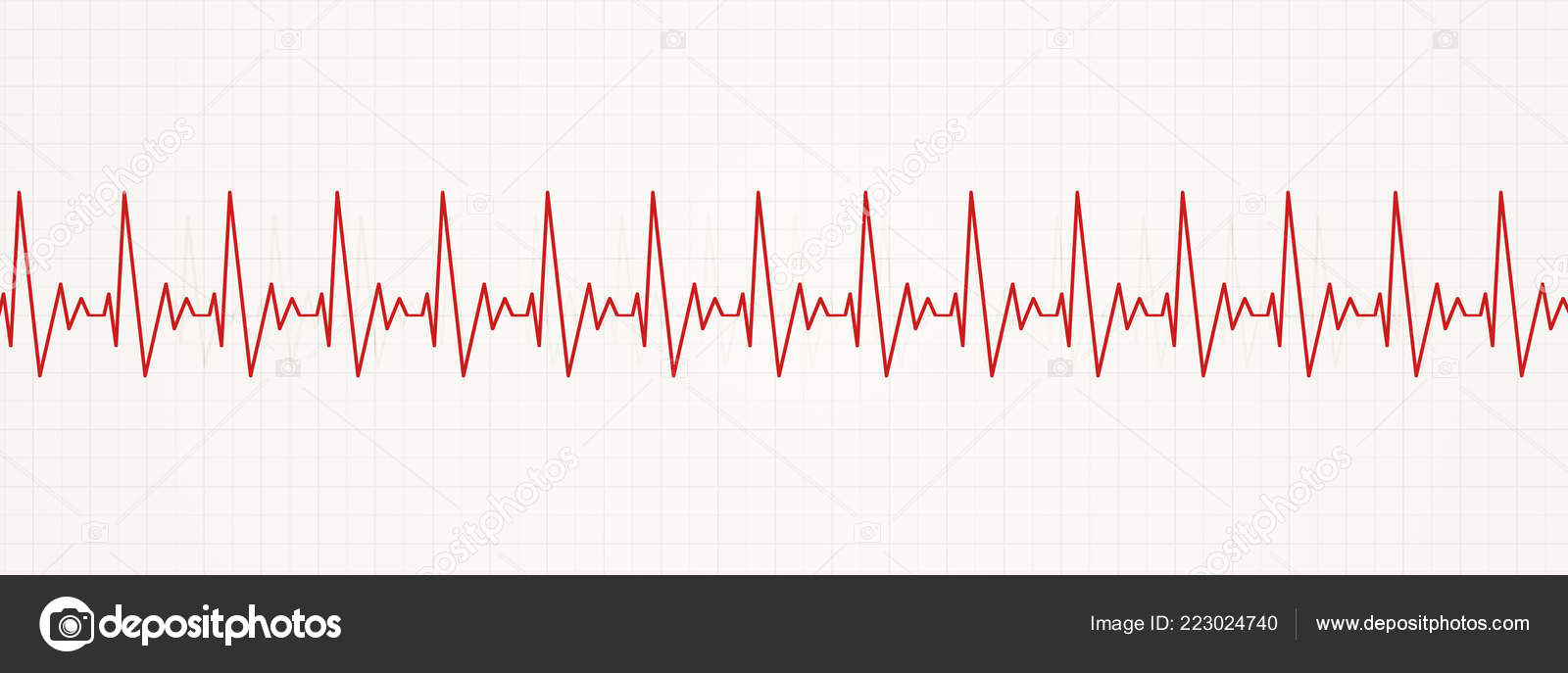 For the most common type of stress test, you’ll walk on a treadmill or pedal a stationary bike while you get an EKG and have your heart rate and blood pressure monitored. Technicians slowly raise the intensity level of your exercise.
For the most common type of stress test, you’ll walk on a treadmill or pedal a stationary bike while you get an EKG and have your heart rate and blood pressure monitored. Technicians slowly raise the intensity level of your exercise.

 The duration of such attacks can vary from a few seconds to several days.
The duration of such attacks can vary from a few seconds to several days.
